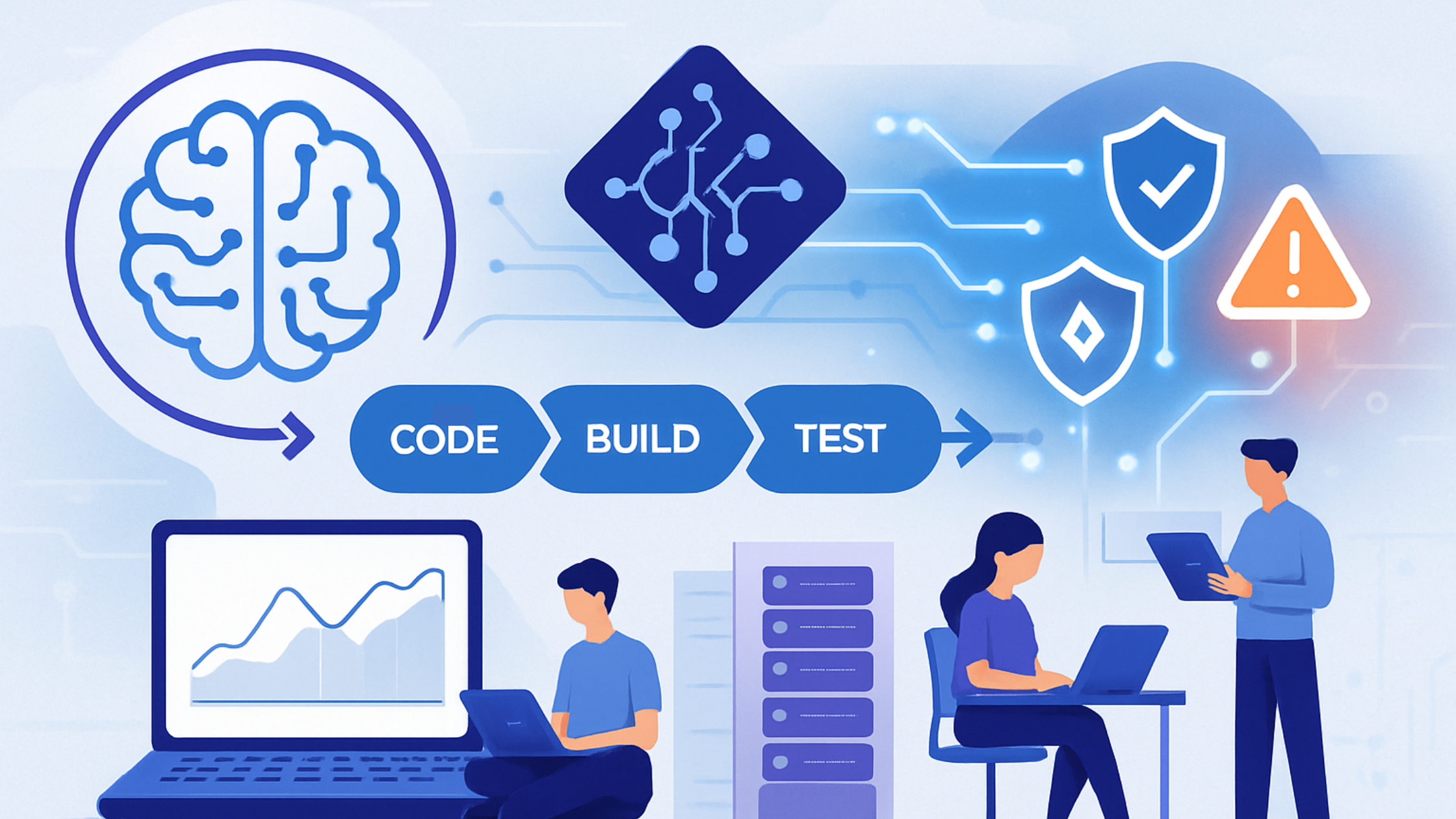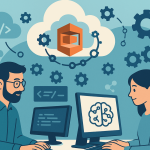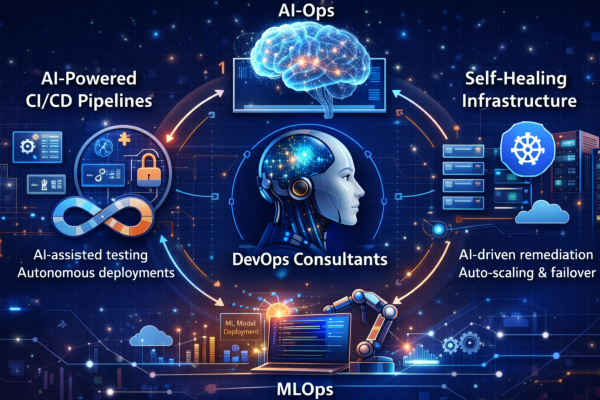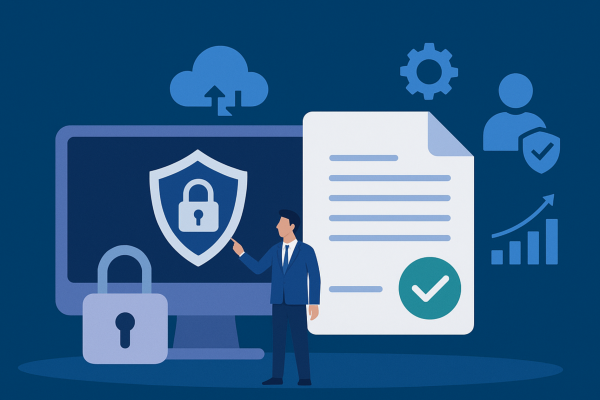How AI and ML Supercharge Threat Detection in DevSecOps Pipelines
In modern software development, speed, automation, and security are all critical. As companies rapidly release code using DevOps practices, integrating security has become essential. This is where DevSecOps Consulting Services come in—they help businesses integrate security directly into the DevOps pipeline. But even with automation, manual threat detection methods can miss advanced threats. That’s why AI (Artificial Intelligence) and ML (Machine Learning) are becoming crucial tools for supercharging threat detection.
In this blog, we’ll explore how AI and ML technologies improve threat detection capabilities in DevSecOps pipelines, the techniques used, and how businesses benefit from using these advanced tools through professional DevSecOps Consulting Services.
Why Traditional Threat Detection Is Not Enough
Traditional security tools rely on rule-based systems and signature databases to detect threats. While these tools are helpful, they have limitations:
- Lack of Real-Time Analysis: Manual reviews and scans delay detection.
- Static Rule Sets: These cannot detect new or unknown (zero-day) threats.
- Increased False Positives: Rule-based tools often flag safe behavior as threats.
- Human Error: Relying on security teams for constant monitoring can result in missed alerts.
DevSecOps environments are dynamic. Continuous integration and delivery (CI/CD) pipelines mean code is pushed frequently. Traditional threat detection simply can’t keep up. This is why AI and ML are being added to security workflows via DevSecOps Consulting Services.
How AI and ML Fit into DevSecOps Pipelines
AI and ML can be integrated at various points in the DevSecOps pipeline to improve security outcomes. Here’s how:
1. Continuous Code Scanning with ML Algorithms
Machine Learning models can scan code repositories for vulnerabilities as code is committed. These models go beyond static analysis and learn from past threats to predict potential risks.
ML detects risky patterns and anomalies in code.
It continuously learns and improves accuracy.
Reduces false positives by distinguishing between benign and malicious code.
2. AI-Powered Behavioral Analysis
AI monitors system behavior during testing and deployment. It creates a baseline of normal activity and flags deviations in real-time.
Detects unusual behavior like unexpected network traffic or file changes.
Identifies insider threats and compromised user accounts.
Helps in detecting zero-day vulnerabilities without signatures.
3. Real-Time Threat Intelligence Integration
AI systems integrate threat intelligence feeds to update security tools with the latest global threat data.
Automatically adapts to new vulnerabilities.
Improves threat detection accuracy.
Predictive analytics warn about future threats before they occur.
4. Automated Incident Response
ML models can trigger automated responses when threats are detected, reducing response time.
Isolates affected systems or containers.
Rolls back to safe configurations.
Notifies the DevSecOps team with detailed insights.
These AI-driven features are typically implemented by DevSecOps Consulting Services to ensure seamless integration with existing CI/CD tools like Jenkins, GitLab, or Azure DevOps.
Techniques AI and ML Use for Threat Detection
Let’s break down the core AI and ML techniques that power advanced threat detection in DevSecOps:
A. Anomaly Detection
This technique identifies patterns that don’t conform to expected behavior.
ML models are trained on normal system behavior.
When something unusual happens (e.g., a user accessing files at odd hours), it triggers alerts.
Useful for detecting insider threats and lateral movements.
B. Supervised Learning for Malware Detection
Supervised ML uses labeled data (benign vs. malicious) to train models.
Scans new files or code for similarities with known malware.
Offers high accuracy if trained with large datasets.
Continuously updated as new malware samples are discovered.
C. Natural Language Processing (NLP)
AI uses NLP to analyze unstructured data like log files, user comments, or error messages.
Extracts meaningful insights from massive log volumes.
Detects threat signals buried in textual data.
Helps in phishing detection and social engineering analysis.
D. Reinforcement Learning
Here, AI learns by interacting with the environment and adjusting its actions based on outcomes.
Used in dynamic threat detection.
AI adapts to new threat landscapes without needing retraining.
By using these techniques, DevSecOps Consulting Services help businesses develop AI-enhanced pipelines that are self-learning and adaptive.
Benefits of AI and ML in DevSecOps Threat Detection
1. Faster Detection of Threats
AI systems can process huge volumes of data instantly, identifying risks in real-time. This allows teams to respond to incidents quickly before damage occurs.
2. Reduced False Positives
ML models learn from past false alerts and refine their detection capabilities. This reduces alert fatigue and allows teams to focus on real threats.
3. Scalability
AI-based tools scale effortlessly with growing infrastructure. Whether you’re managing 10 or 10,000 servers, AI can handle threat detection at any scale.
4. 24/7 Monitoring
AI never sleeps. Continuous monitoring ensures threats are detected even during off-hours or when human teams are unavailable.
5. Proactive Security
With predictive analytics, AI can anticipate future risks. This helps in strengthening defenses before attacks happen.
6. Efficient Compliance Management
Many regulations like GDPR, HIPAA, or PCI DSS require continuous security monitoring. AI-enabled DevSecOps tools help organizations meet these compliance needs efficiently.
Professional DevSecOps Consulting Services often include AI-driven solutions to help clients achieve these benefits without major infrastructure changes.
Tools and Platforms Using AI for Threat Detection
Several advanced tools use AI and ML for threat detection in DevSecOps environments. Examples include:
- Snyk: AI-enhanced open-source security scanning.
- Aqua Security: Uses ML for container security.
- Darktrace: AI-powered threat detection across IT systems.
- IBM QRadar: Integrates AI for Security Information and Event Management (SIEM).
- CrowdStrike Falcon: ML-based endpoint protection.
- Microsoft Defender for DevOps: AI-backed threat detection integrated into CI/CD.
Many of these platforms are configured and optimized by DevSecOps Consulting Services for maximum effectiveness.
Implementation Strategy: AI-Powered Threat Detection
Here is how DevSecOps Consulting Services implement AI/ML for threat detection:
Step 1: Assessment and Data Collection
Gather logs, metrics, code repositories, and infrastructure data.
Evaluate current tools and identify gaps in security monitoring.
Step 2: AI Tool Selection
Choose appropriate AI tools based on tech stack (e.g., Kubernetes, AWS, GitHub).
Ensure integration with CI/CD pipeline tools.
Step 3: Model Training and Tuning
Train ML models on historical data.
Customize detection rules and baselines for the business.
Step 4: Integration and Automation
Automate scanning, detection, and alerting processes.
Set up automated incident responses.
Step 5: Monitoring and Continuous Improvement
Continuously monitor tool performance.
Retrain ML models with new data for improved accuracy.
Using expert DevSecOps Consulting Services, organizations can implement this strategy with minimal disruption and faster results.
Challenges in AI-Driven Threat Detection
While AI and ML offer powerful capabilities, there are challenges:
- Data Quality: Poor data can reduce accuracy of ML models.
- Complexity: AI tools require technical expertise for setup and maintenance.
- False Negatives: No system is perfect; some threats may still be missed.
- Privacy Concerns: Collecting large amounts of data may create compliance risks.
To overcome these challenges, DevSecOps Consulting Services help by ensuring data governance, tool optimization, and skilled AI model tuning.
Future of AI in DevSecOps Threat Detection
AI and ML are evolving rapidly. Future trends include:
- Federated Learning: Training models across multiple devices without sharing data, enhancing privacy.
- Explainable AI (XAI): Makes AI decisions more transparent for auditing and trust.
- AI Co-Pilots: Real-time AI assistants guiding developers to write secure code.
- Edge AI Security: AI running at the edge (e.g., IoT devices) for faster local threat detection.
Investing in DevSecOps Consulting Services ensures organizations are ready to adopt these innovations.
Conclusion
AI and ML have transformed how threats are detected in DevSecOps pipelines. By providing real-time, intelligent analysis and automation, they offer security at the speed of DevOps. From anomaly detection to automated incident response, these technologies minimize risk, reduce human effort, and ensure compliance.
Companies looking to upgrade their security posture should consider DevSecOps Consulting Services that specialize in AI-driven solutions. With expert help, businesses can build resilient, secure, and future-ready software delivery pipelines.
Author







